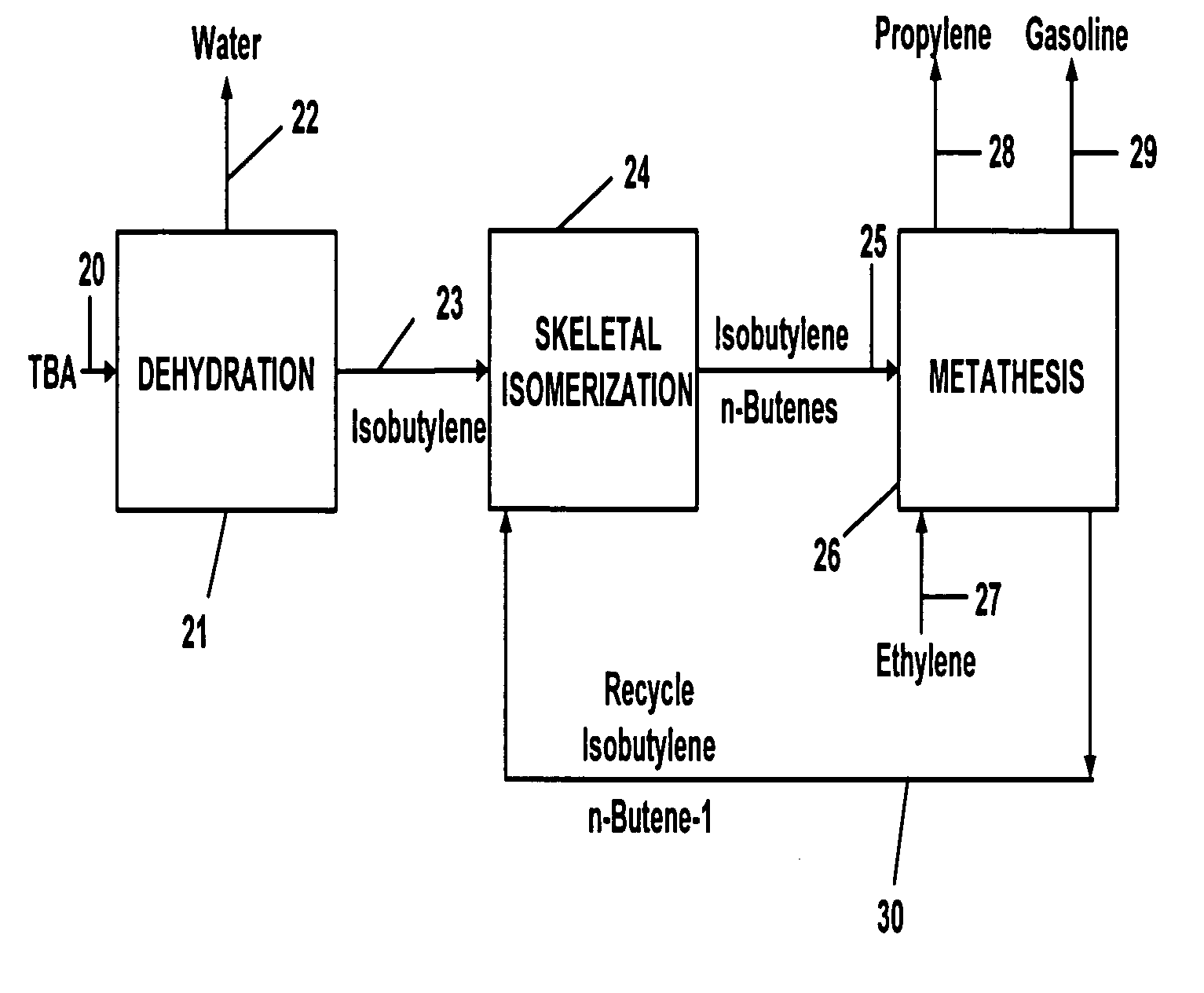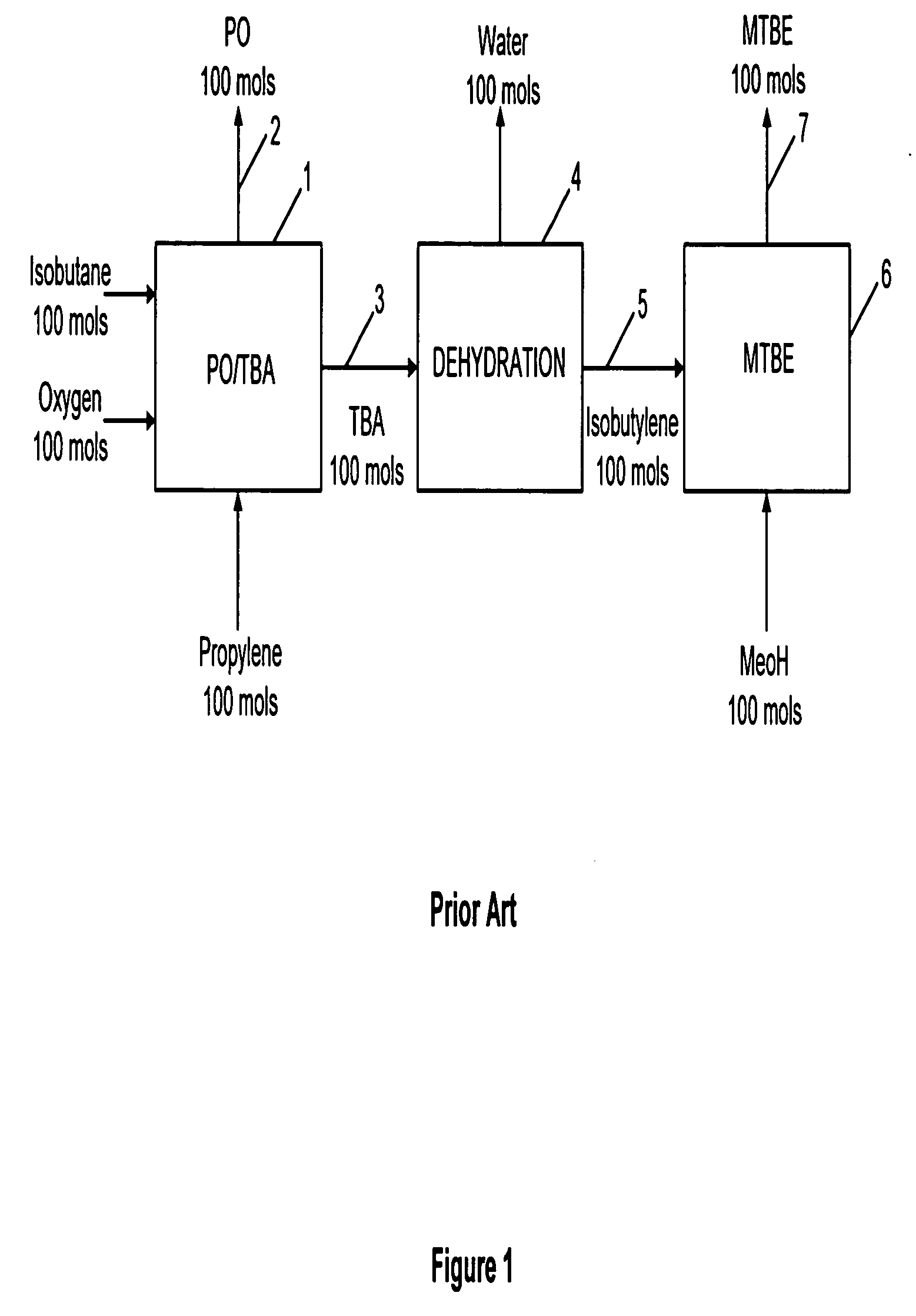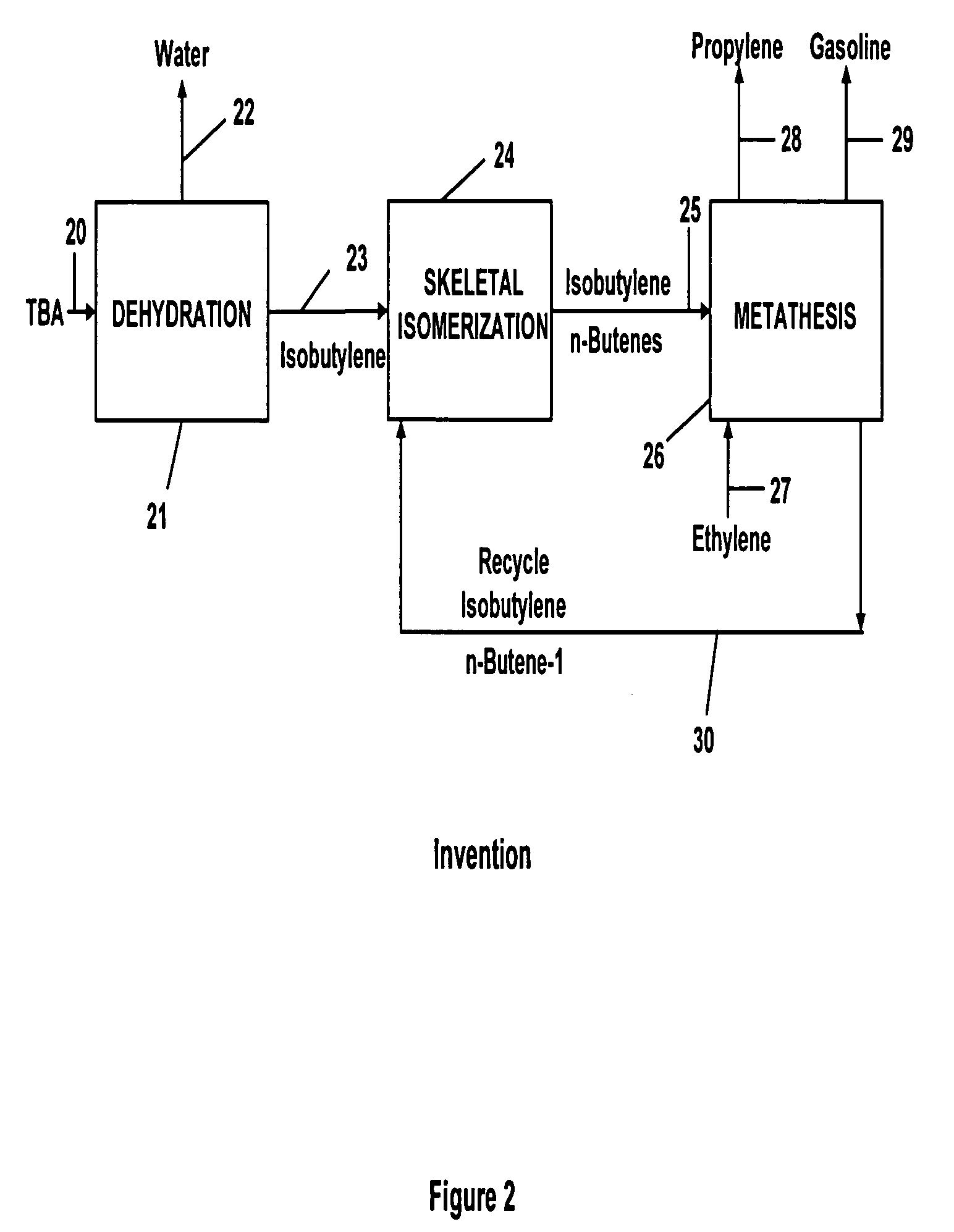Propylene production
a propylene and production method technology, applied in the field of making propylene, can solve the problems of limited supply, no gas pipeline nearby which can be used, and the cost of propane dehydrogenation to form propylene is high, and the cost of propane dehydrogenation to form propylene is usually the highes
- Summary
- Abstract
- Description
- Claims
- Application Information
AI Technical Summary
Benefits of technology
Problems solved by technology
Method used
Image
Examples
example
[0042] Tertiary-butyl alcohol is fed into a dehydration zone, unit 21 of FIG. 2, wherein it is dehydrated in the liquid phase to primarily isobutylene and water at 600° F. and 200 psig using alumina as a catalyst. The catalyst is present in a concentration of about 2.5 weight percent (wt %) based on the total weight of the liquid reaction mixture. A vaporous reaction mixture is removed from the unit which mixture, after cooling to about 90° F. at 20 psia and removal of liquid condensation products, yields a final isobutylene product stream that contains about 96.4 wt % isobutylene, about 1.1 wt % water, about 1.1 wt % TBA, and about 1.4 wt % isobutanol.
[0043] The final isobutylene product stream is fed to a skeletal isomerization zone, unit 24 of FIG. 2, wherein a substantial amount of the branched chain isobutylene in the isobutylene product stream is converted into a mixture of linear butene-1 and butene-2 using a temperature of about 700° F. under a pressure of about 16 psig at ...
PUM
| Property | Measurement | Unit |
|---|---|---|
| Temperature | aaaaa | aaaaa |
| Temperature | aaaaa | aaaaa |
| Temperature | aaaaa | aaaaa |
Abstract
Description
Claims
Application Information
 Login to View More
Login to View More - R&D
- Intellectual Property
- Life Sciences
- Materials
- Tech Scout
- Unparalleled Data Quality
- Higher Quality Content
- 60% Fewer Hallucinations
Browse by: Latest US Patents, China's latest patents, Technical Efficacy Thesaurus, Application Domain, Technology Topic, Popular Technical Reports.
© 2025 PatSnap. All rights reserved.Legal|Privacy policy|Modern Slavery Act Transparency Statement|Sitemap|About US| Contact US: help@patsnap.com



